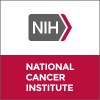
Genetically Modified Neural Stem Cells, Flucytosine, and Leucovorin for Treating Patients With Recurrent...
Adult Anaplastic AstrocytomaAdult Anaplastic Oligodendroglioma5 moreThis phase I trial studies the side effects and determines the best dose of genetically modified neural stem cells and flucytosine when given together with leucovorin for treating patients with recurrent high-grade gliomas. Neural stem cells can travel to sites of tumor in the brain. The neural stem cells that are being used in this study were genetically modified express the enzyme cytosine deaminase (CD), which converts the prodrug flucytosine (5-FC) into the chemotherapy agent 5-fluorouracil (5-FU). Leucovorin may help 5-FU kill more tumor cells. The CD-expressing neural stem cells are administered directly into the brain. After giving the neural stem cells a few days to spread out and migrate to tumor cells, research participants take a 7 day course of oral 5-FC. (Depending on when a research participant enters the study, they may also be given leucovorin to take with the 5-FC.) When the 5-FC crosses into brain, the neural stem cells convert it into 5-FU, which diffuses out of the neural stem cells to preferentially kill rapidly dividing tumor cells while minimizing toxicity to healthy tissues. A Rickham catheter, placed at the time of surgery, will be used to administer additional doses of NSCs every two weeks, followed each time by a 7 day course of oral 5-FC (and possibly leucovorin). This neural stem cell-based anti-cancer strategy may be an effective treatment for high-grade gliomas. Funding Source - FDA OOPD

Bevacizumab With or Without Trebananib in Treating Patients With Recurrent Brain Tumors
Giant Cell GlioblastomaGlioblastoma4 moreThis partially randomized phase II trial with a safety run-in component studies the side effects and how well bevacizumab given with or without trebananib works in treating patients with brain tumors that have come back (recurrent). Immunotherapy with monoclonal antibodies, such as bevacizumab, may induce changes in the body's immune system and interfere with the ability of tumor cells to grow and spread. Trebananib may stop the growth of tumor cells by blocking blood flow to the tumor. It is not yet known whether giving bevacizumab together with trebananib is more effective than bevacizumab alone in treating brain tumors.

Aminolevulinic Acid in Visualizing a Tumor During Surgery in Patients With Glioblastoma Multiforme...
Adult Giant Cell GlioblastomaAdult Glioblastoma2 moreThe purpose of this study is to investigate the safety and performance of an investigational agent, known as 5-ALA or Gliolan (aminolevulinic acid), that many be useful to a surgeon for visualizing a tumor during surgery. It is also being studied to determine if there are differences in what Gliolan shows a surgeon compared to intraoperative magnetic resonance imaging (MRI)

BrUOG 263: Prostate Specific Membrane Antigen (PSMA) Glioblastoma Multiforme (GBM)
GBMGlioblastoma Multiforme1 moreThe purpose of this study is to evaluate the effectiveness of Prostate Specific Membrane Antigen (PSMA ADC), as well as its safety and side effects for patients with advanced brain tumors. This study will also study how your body metabolizes (breaks down) PSMA ADC.

Gadobutrol Versus Gadopentetate Dimeglumine or Gadobenate Dimeglumine Before DCE-MRI in Diagnosing...
Adult Anaplastic (Malignant) MeningiomaAdult Anaplastic Astrocytoma23 moreThis pilot clinical trial compares gadobutrol with standard of care contrast agents, gadopentetate dimeglumine or gadobenate dimeglumine, before dynamic contrast-enhanced (DCE)-magnetic resonance imaging (MRI) in diagnosing patients with multiple sclerosis, grade II-IV glioma, or tumors that have spread to the brain. Gadobutrol is a type of contrast agent that may increase DCE-MRI sensitivity for the detection of tumors or other diseases of the central nervous system. It is not yet known whether gadobutrol is more effective than standard of care contrast agents before DCE-MRI in diagnosing patients with multiple sclerosis, grade II-IV glioma, or tumors that have spread to the brain.

Vaccine Therapy and Sargramostim in Treating Patients With Malignant Glioma
Anaplastic AstrocytomaAnaplastic Oligoastrocytoma6 moreThis phase I trial studies the side effects of vaccine therapy when given together with sargramostim in treating patients with malignant glioma. Vaccines made from survivin peptide may help the body build an effective immune response to kill tumor cells. Colony-stimulating factors, such as sargramostim, may increase the number of white blood cells and platelets found in bone marrow or peripheral blood. Giving vaccine therapy and sargramostim may be a better treatment for malignant glioma.

A Phase I Trial of Nanoliposomal CPT-11 (NL CPT-11) in Patients With Recurrent High-Grade Gliomas...
GlioblastomaGliosarcoma2 moreThis is a Phase I study of Nanoliposomal CPT-11 in patients with Recurrent high-grade gliomas. Patients must have a histologically proven intracranial malignant glioma, which includes glioblastoma multiforme (GBM), gliosarcoma (GS), anaplastic astrocytoma (AA), anaplastic oligodendroglioma (AO), anaplastic mixed oligoastrocytoma (AMO), or malignant astrocytoma NOS (not otherwise specified). Patients who are wild type or heterozygous for the UGT1A1*28 gene will received Nanoliposomal CPT-11. The total anticipated accrual will be approximately 36 patients (depending upon the actual MTD). The investigators hypothesis is that this new formulation of CPT-11 will increase survival over that seen in historical controls who have recurrent gliomas because CPT-11 will be encapsulated in a liposome nanoparticle, which has been seen to reduce toxicities from the drug.

Avastin/Temozolomide/Irinotecan for Unresectable/Multifocal Glioblastoma Multiforme
Glioblastoma MultiformeGliosarcomaThe primary objective of the study is to determine the efficacy of Avastin in combination with temozolomide and irinotecan in terms of response rate. The secondary objectives are to describe the overall and progression-free survivals of unresectable patients treated with upfront Avastin, temozolomide and irinotecan and to assess the safety of Avastin, temozolomide and irinotecan in unresectable glioblastoma patients. This is a phase II study with the combination of Avastin, temozolomide and irinotecan for unresectable or multifocal World Health Organization (WHO) grade IV malignant glioma patients. Patients will receive up to four cycles of Avastin, temozolomide and irinotecan. Approximately 41 subjects will take part in this study at Duke.

Cediranib, Temozolomide, and Radiation Therapy in Treating Patients With Newly Diagnosed Glioblastoma...
Adult Giant Cell GlioblastomaAdult Glioblastoma1 moreThis phase I/II trial is studying the side effects and best dose of cediranib to see how well it works when given together with temozolomide and radiation therapy in treating patients with newly diagnosed glioblastoma. Cediranib may stop the growth of tumor cells by blocking some of the enzymes needed for cell growth and by blocking blood flow to the tumor. Drugs used in chemotherapy, such as temozolomide, work in different ways to stop the growth of tumor cells, either by killing the cells or by stopping them from dividing. Radiation therapy uses high-energy x-rays to kill tumor cells. Giving cediranib together with temozolomide and radiation therapy may kill more tumor cells.

Avastin in Combination With Temozolomide for Unresectable or Multifocal GBMs and Gliosarcomas
GlioblastomaGliosarcomaPrimary objective- To determine efficacy of Avastin, 10 mg/kg every other week, in combination with standard 5-day temozolomide in terms of response rate. Secondary objective- To determine safety of Avastin & Temozolomide in unresectable glioblastoma patients
